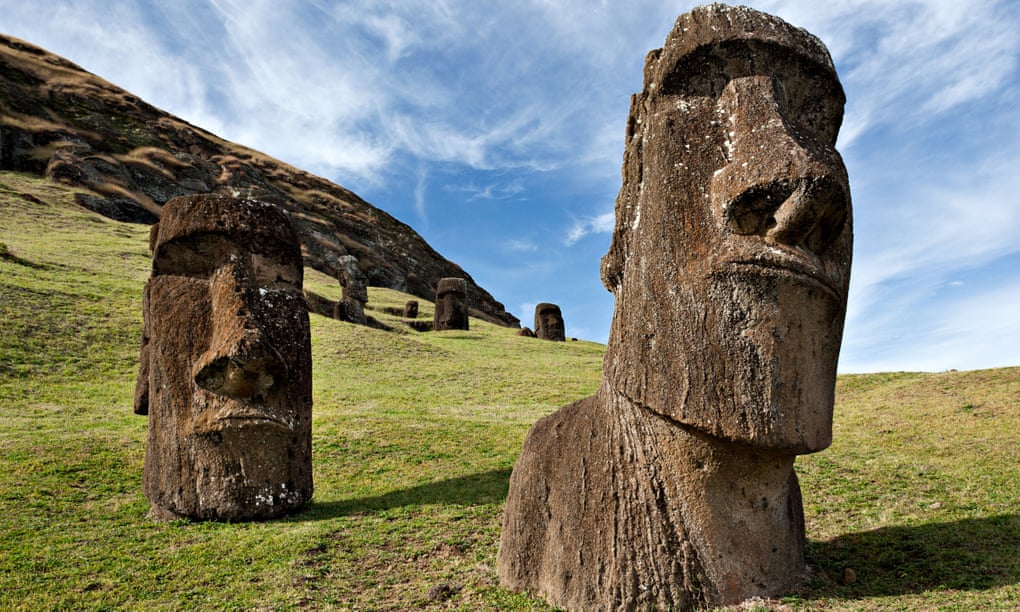
Proximity to Resources Helps Explain Locations of Easter Island Monuments, a New Paper Argues

A new paper by archaeologists Terry Hunt and Carl Lipo addresses one of the longstanding mysteries of the monuments of Easter Island: their location.
Four hundred of the statues, known as muai, are located miles away from where they were originally quarried, and sit on megalithic platforms, or ahu. An analysis of the locations of the ahu has led Hunt and Lipo to conclude that the statues were placed close to sources of fresh water—a scarce and precious commodity on the remote Pacific island.
The issue of water availability (or the lack of it) has often been mentioned by researchers who work on Rapa Nui/Easter Island. When we started to examine the details of the hydrology, we began to notice that freshwater access and statue location were tightly linked together. It wasn’t obvious when walking around—with the water emerging at the coast during low tide, one doesn’t necessarily see obvious indications of water. But as we started to look at areas around ahu, we found that those locations were exactly tied to spots where the fresh groundwater emerges—largely as a diffuse layer that flows out at the water’s edge. The more we looked, the more consistently we saw this pattern. Places without ahu/moai showed no freshwater. The pattern was striking and surprising in how consistent it was. Even when we find ahu/moai in the interior of the island, we find nearby sources of drinking water. This paper reflects our work to demonstrate that this pattern is statistically sound and not just our perception.
The paper is the latest effort by Hunt and Lipo to challenge narratives about what happened on Easter Island. In 02004’s Collapse, Jared Diamond invoked Easter Island as a cautionary example of what happens to societies that don’t stay within their ecological limits. As Stewart Brand put it in a summary of Diamond’s 02005 Seminar:
A society that could build 80-ton statues 33 feet high and drag them 12 miles, and who could navigate the Pacific Ocean to and from the most remote islands in the world, could also cut down their rich rain forest and doom themselves utterly. With no trees left for fishing canoes, the Easter Islanders turned to devouring each other. […] The population fell by 90% in a few years, and neither the society nor the island ecology have recovered in the 300 years since.
Hunt and Lipo challenged this ‘ecocide’ thesis in the years that followed, resulting in a spirited back-and-forth with Diamond. It was the encounter with Europeans and the diseases they brought—not a failure to live within ecological limits—that doomed Easter Island, Hunt and and Lipo argue. As Stewart Brand put it in a summary of Hunt and Lipo’s 02013 Seminar:
A completely different story emerged from Hunt and Lipo’s archaeology. Polynesians first arrived as late as 1200AD. There are no signs of violence—none of the fortifications common on other Pacific islands, no weapons, no traumatized skeletons. The palm trees that originally covered the island succumbed mainly to rats that arrived with the Polynesians and ate all the nuts. The natives burned what remained to enrich the poor soil and then engineered the whole island with small rocks (“lithic mulch”) to grow taro and sweet potatoes. The population stabilized around 4,000 and kept itself in balance with its resources for 500 years until it was totally destroyed in the 18th century by European diseases and enslavement. (It wasn’t Collapse; it was Guns, Germs, and Steel.)
The new research by Hunt and Lipo adds further complexity to the “What Happened on Easter Island?” question, and lends credence to Lipo and Hunt’s arguments that the society was much more cooperative and collaborative than Diamond’s account suggests. From a Guardian interview with Hunt and Lipo about their findings:
The study also adds weight to the idea that communities competed and interacted through monument building, in contrast to the idea that islanders engaged in lethal violence over scarce natural resources – something Lipo says there is little evidence for. Indeed, the team is now exploring whether various aspects of the statues such as their size or other features might be linked to the quality of the water resources, potentially offering a way in which a community could show off a competitive advantage to other groups of islanders.
And community and cooperation, stresses Lipo, were crucial in construction of the monuments. “Anything that brings you together is going to make you stronger and allow you to survive,” he said. “I think that is the secret to Easter Island.”
Learn More:
- Watch Jared Diamond’s 02005 Seminar on How Societies Fail and Sometimes Succeed.
- Watch Terry Hunt and Carl Lipo’s 02013 Seminar on What Really Happened on Easter Island.
- Read Hunt and Lipo’s new paper in full.
Join our newsletter for the latest in long-term thinking
Subscribe